On its native continent of Africa and in parts of Asia, jute is often grown as a crop.
However, in some parts of the world, such as Australia and the Northern African nation of Egypt, jute is considered to be a weed.
However, since jute leaves have so many wonderful properties, it’s not surprising that a lot of people want to try their hand at growing it.
What to Expect? In this guide on how to grow jute, you’ll learn why this is a beneficial plant and just what you’ll need to do to help it thrive.
What Is Jute?
Jute is a name given to a group of plants that belong in the corchorus genus.
Within this family of plants, there are more than 100 different species.
However, when it comes to growing jute commercially, farmers typically go for either tossa jute or white jute.
The leaves of this plant are in high demand for many reasons. We’ll look at the benefits of jute in a little more detail later on.
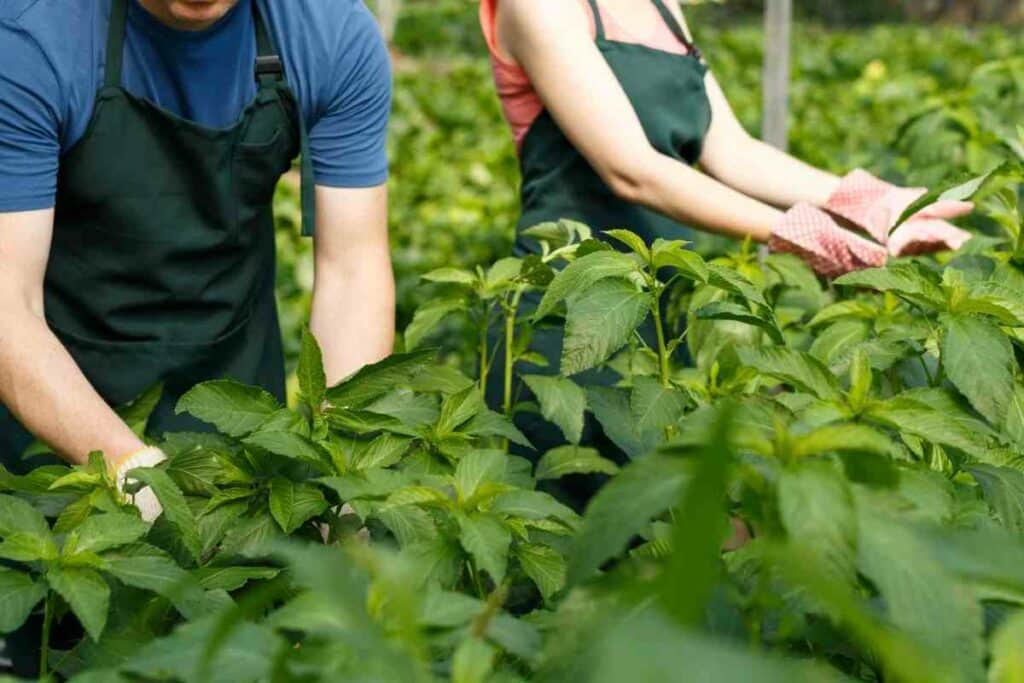
But for now, understand that jute is both nutritionally beneficial as well as being used as a natural fiber.
Africa is the native continent for jute but this plant is now widely cultivated across Asia.
In Fact – Bangladesh is one of the biggest suppliers of jute in the world, falling second only to India. China is also one of the countries that produces a lot of these crops.
However, jute can also be grown as an ornamental plant so is a popular choice for home gardeners who want to try their hand at something exotic.
The great thing about it is that it does very well in warmer climates and, once established, doesn’t need too much maintenance.
Why Is Jute Valuable?
As we have mentioned, jute is a valuable fiber crop.
It is typically used for things like bags, sacks and packaging especially in the agricultural industry.
However, jute is also used as a food crop. The growing tips and the leaves are eaten as a vegetable.
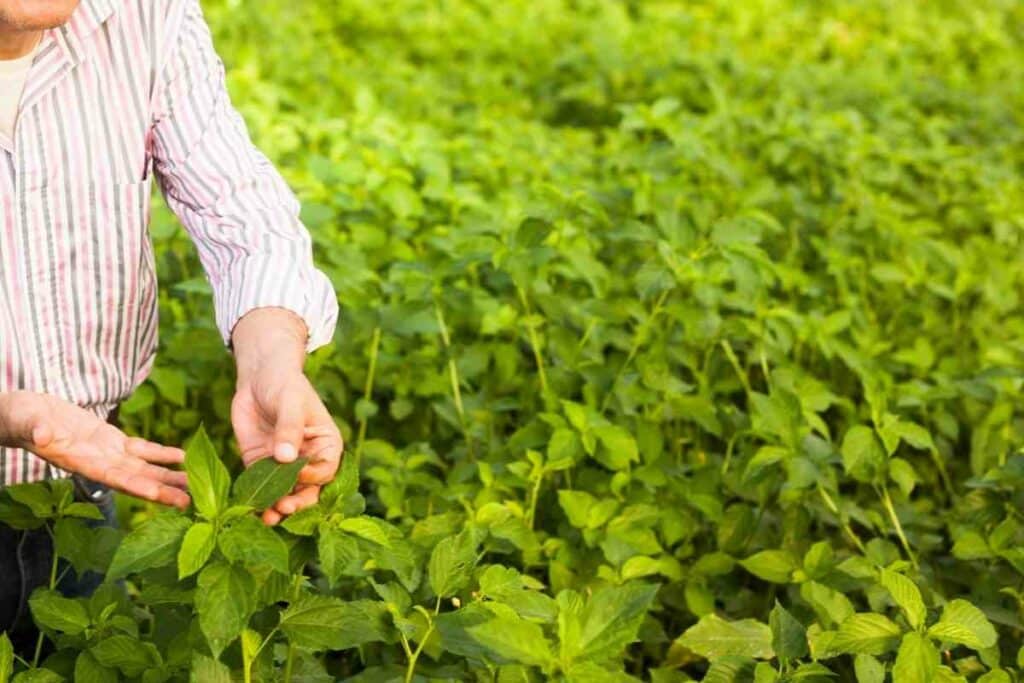
In countries where jute is grown, it’s an invaluable source of nutrition during the rainy season since things like kale and cabbage do not grow as readily at this time.
You can shred the leaves and make them into a paste but there are many other ways of eating them.
Some people dry out the jute leaves before grinding them into a powder.
It is also common for people to make jute soup by boiling the leaves. However, you can simply eat the leaves as they are or cook them and eat them whole.
Did You Know? The great thing about jute is that it is bursting with nutrition. Many people add it to a high starch diet since it contains a lot of vitamin C as well as high levels of protein.
There is some suggestion that jute has healing properties such as being an anti-inflammatory. For this reason, you will often see it being used in alternative medicine.
What Type Of Soil Does Jute Need?
Commercially, farmers typically grow jute in both clay and sand loamy soils.
However, if the soil is particularly heavy, this will not be suitable for growing jute.
You should also make sure that the soil has a high pH. When the soil pH is too low, the yield won’t be as great.
Generally speaking, you want to make sure that the soil is around 6.4 at least.
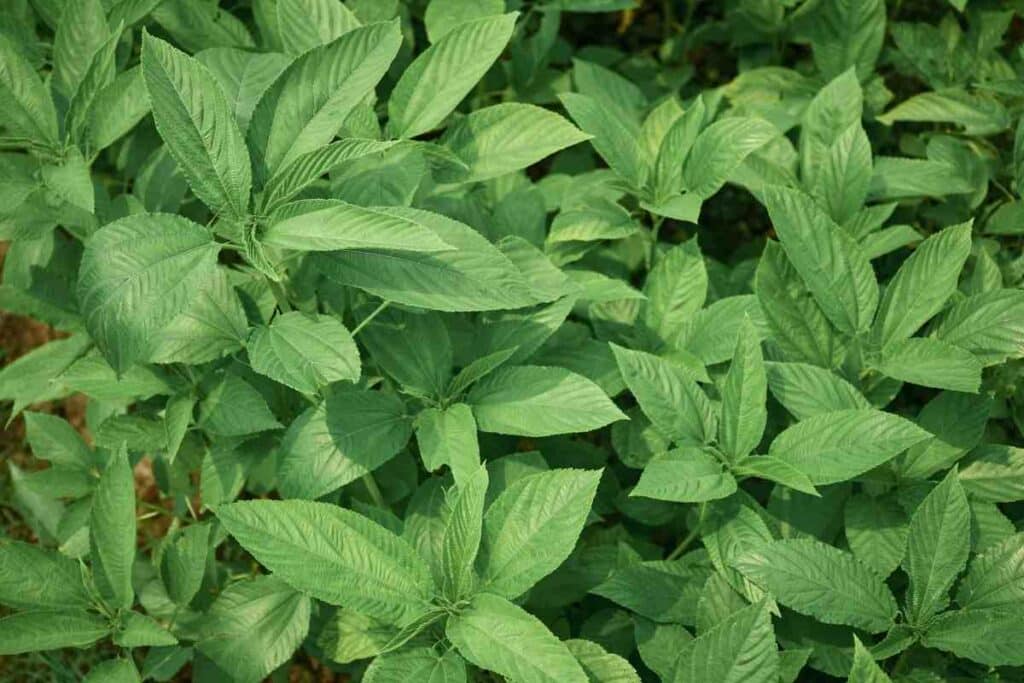
Jute grows best on higher land commercially. This is because there is no risk of flood water standing on the ground which will affect the plant.
While jute does need to be regularly watered, you don’t want to risk going over the top.
While the plant is in its seedling stage, poor drainage will really impact its ability to thrive and the plant will likely die.
For This Reason – Make sure that you use well-draining soil.
You can add a variety of organic materials to the soil in order to boost the growth of your jute.
Some of the best options are things like wood ashes, cow dung and rotten water hyacinth. All of these things will add important nutrients to the soil.
What Are The Best Growing Conditions For Jute?
Natively, jute grows in warmer climates that are relatively humid.
If you are growing this plant in the US, then it is worth noting that it will thrive best in zones 10 or higher.
The temperature for jute needs to be between 75ºF and 98ºF as long as there is a good amount of humidity.
Note that jute will not tolerate freezing temperatures so if you are going to grow it in a cooler zone, you may struggle.
It is possible to keep it in a greenhouse but you likely won’t have as much success as you would in other areas.
Moreover, it’s important to note that, while jute will not thrive in waterlogged soil, it does need a lot of rainfall if it is going to produce a good yield.
Generally Speaking – You would expect jute to grow best in places where there is between 250mm and 270mm of rainfall.
When Is The Best Time To Plant Jute?
The best time to plant your jute seeds will largely depend on the type of jute you are growing.
As we have mentioned, white jute and tossa jute are the most common species both for commercial and domestic growers.
When planting white jute, you should aim to sow the seeds no earlier than February and no later than April.
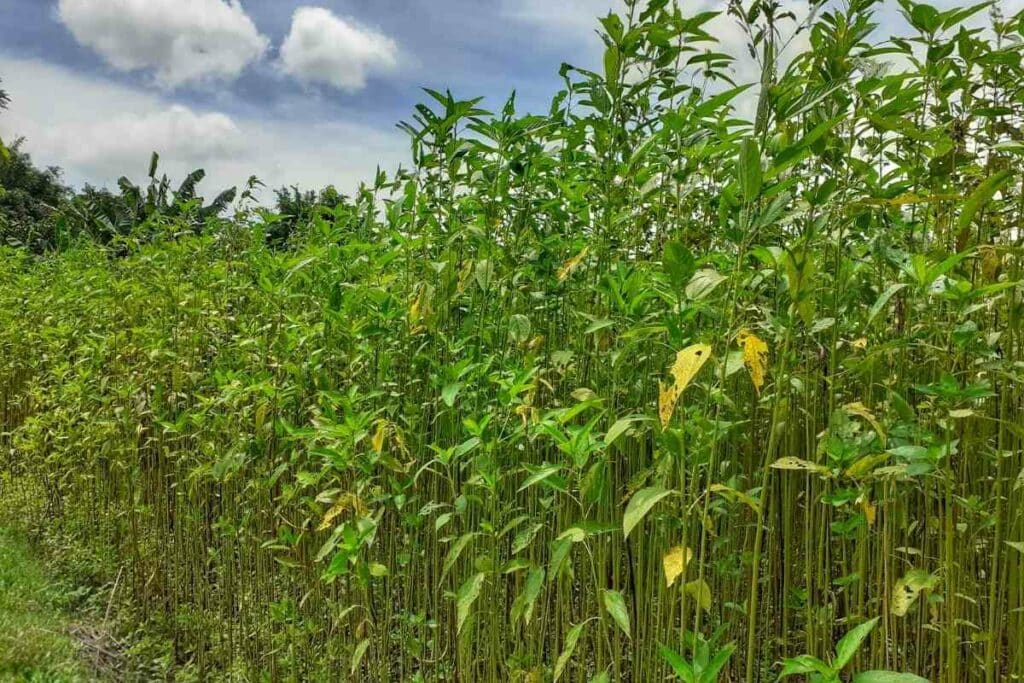
If you’re using tossa jute seeds then you’ll need to wait until March before you can plant them but make sure you don’t leave it any later than April.
How Do You Grow Jute?
In the USA, jute is not always easy to get your hands on.
For this reason, you’ll probably find that you cannot purchase an adult plant and you will need to grow your jute leaves from seed.
Before you plant the seed:
- You will need to soak them in hot water for around ten seconds. This will ensure that the seeds germinate; not doing this might mean that they do not sprout.
- When you have done this, you should find a suitable container for growing the seeds. While seeds may be directly sown into the ground for commercial growing, it’s generally best to start them in pots when growing jute at home.
- Fill your pot with a rich potting soil and mix in some peat if you need to alter the pH.
- When you’re ready, you can sow your seeds on the top of the soil but make sure that you leave at least an inch of space between them. Now cover them with a very thin layer of soil.
Finding The Right Location For Your Jute Plant
Once you have planted your jute seeds, you’re going to need to find a good spot for them.
If you’re keeping the container indoors, then a south facing window is a great location.
When placing the pot outdoors, make sure that it is in a sunny and warm position.
Watering Your Jute Plant
It’s important not to overwater your jute plant but you will need to have a strict schedule to make sure that it gets enough.
Generally speaking, you should water your jute plant once a week, making sure that the top two inches of the soil are kept moist.
Replanting Your Jute Plant
Once the seeds have sprouted and your jute plants have begun to grow, you will need to remove some of the seedlings.
Take them all out when they get to around six or eight inches apart from the tallest.
Normally – This should take around a month but the plant won’t reach full maturity for a further three months.
If you want to make sure that your plant does really well and are growing it indoors, it can help to take it outside whenever the temperature is higher than that of indoors.
Harvesting Jute
Jute leaves are better if they are harvested when they are young.
For this reason, you’d usually prune the leaves as soon as they start to emerge.
However, beyond this, the plant will keep growing so you will have a constant supply of fresh leaves. If you prefer, you can uproot the plant to remove the leaves rather than just pruning it.
Jute plants also produce fruit but you will need to wait until it is tender.
This typically happens while the fruit is still quite immature so make sure that you keep checking it so as not to miss that sweet spot.
The fruit is also wonderful when dried out and this can be done on the plant. From flowering, this would normally take around six weeks.
Does Jute Suffer With Pests And Disease?
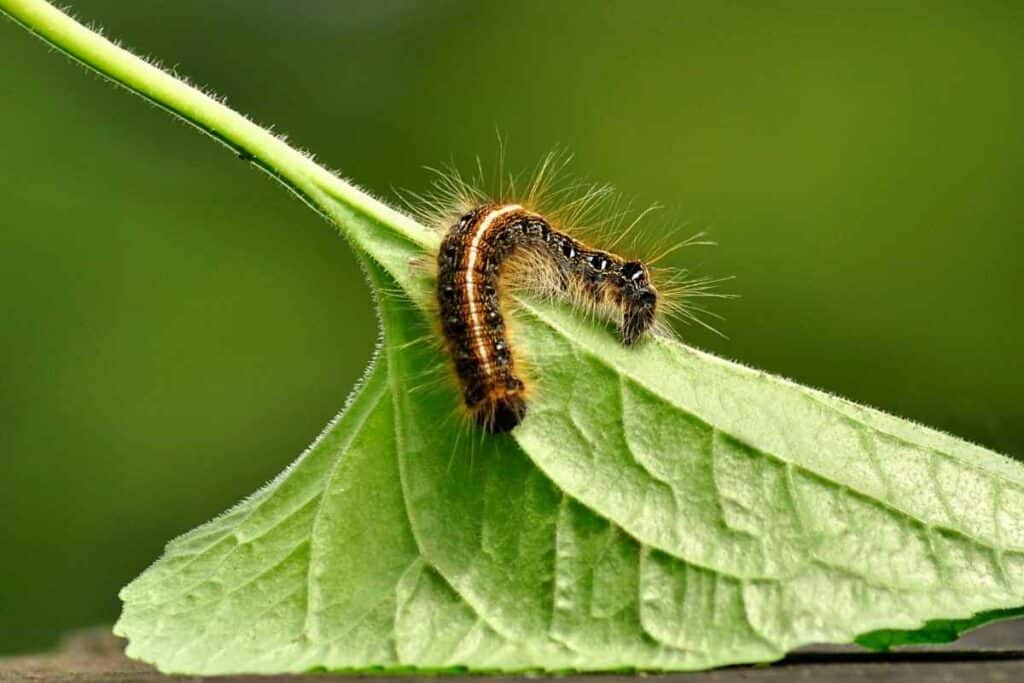
When growing jute in large numbers, commercial growers typically have problems with pests such as:
- nematodes
- beetles
- caterpillars
These may also be a problem when growing the plant at home but as long as there is an adequate amount of rainfall, these pests are usually kept at bay.
Of course, you can use an insecticide to treat any serious problems.
Moreover, you will find that adding things like manure to the soil will prevent insects from taking an interest.
The good news is that there aren’t typically any problems with disease for jute plants.
Conclusion
Jute is a plant with many benefits and uses; it can be eaten and contains a wide range of nutrients.
Commercially, it’s often sold as a fiber crop for making sacks and bags for packaging.
If you want to grow jute at home, it’s relatively easy since this is a low-maintenance plant.
The only thing that you really need to make sure of is that you provide the right growing conditions or the plant will not survive.
